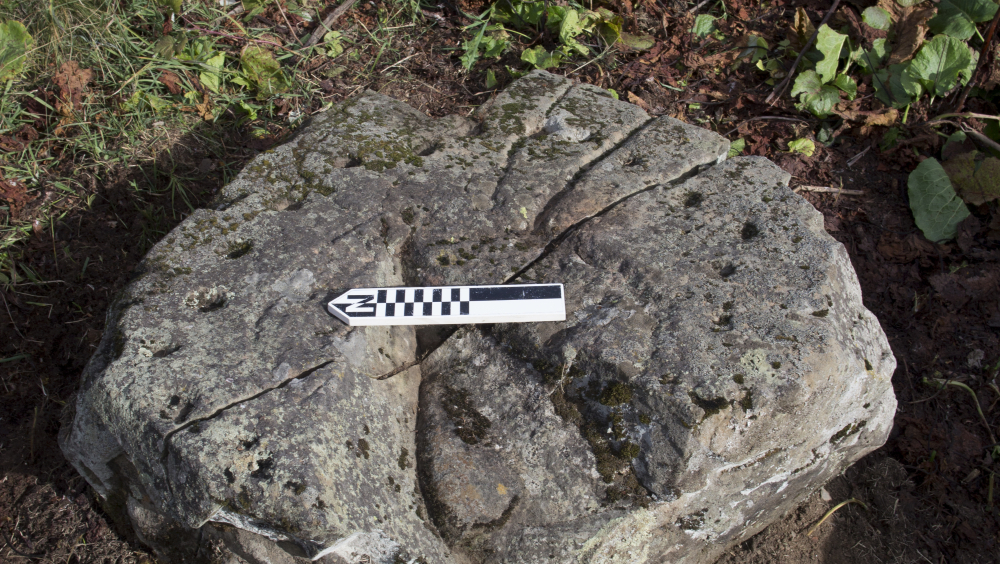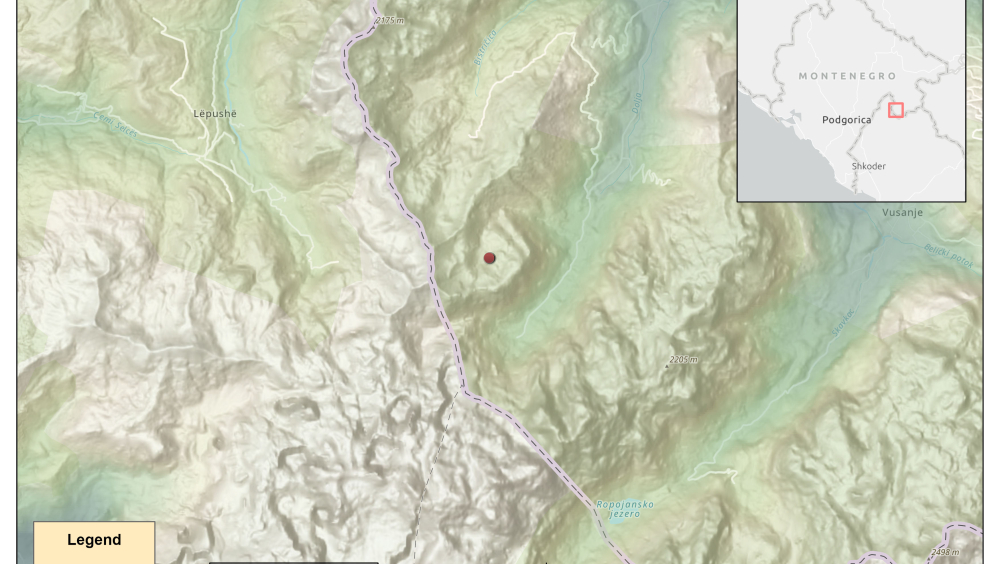The Bronze Age Gnomonist - Prehistoric Timekeeping Device
The Bronze Age Gnomonist - Prehistoric Timekeeping Device
In October 2021 ancient analemmatic sundial has been discovered in the high altitude zone of the Prokletije mount range. The sundial was found by archaeologist Miloš Petričević. Discovered analemmatic sundial certainty represents the oldest discovery of this sort on the territory of Montenegro. The stone sundial with time markings is located in the open, in close vicinity to the nearby stream at the foot of Maja e Can in Volušnica massif at 1710m a. s.l. It is a sedimentary rock (sandstone) whose relatively horizontal position reflects the intent to establish precise criteria for tracking the Sun movement, i.e. measuring time.
Based on the condition and position of the rock it is impossible to establish whether the sundial was found in its original place or position (in situ).
The Bronze Age Gnomonist (Prehistoric Timekeeping Device)
The investigation of prehistoric sites in the high-altitude areas of Montenegro has not been the national archaeologists’ focus of interest. Moreover, it could be said that their presence was considered highly unlikely. The prejudice that mountain regions are an area of marginal and occasional human activity has contributed to the fact that high altitude archaeology was never regarded as an important constituent of national archaeology. Both low-level knowledge and remoteness of Montenegrin high altitude areas still make it an unknown to Montenegrin archaeology, especially in terms of prehistory.
The area of Montenegrin high mountains and terrain, also known as Montenegrin Hills, mainly encompasses the northern part of Montenegro. This is an area characterized by vast limestone formations and plateaus bordered by several parallel ranges. This is an area of the highest mountains in the Dinaric Alps.
In October 2021 ancient analemmatic sundial has been discovered in the high altitude zone of the Prokletije mount range. The sundial was found by archaeologist Miloš PetričevićDiscovered analemmatic sundial certainty represents the oldest discovery of this sort on the territory of The sundial was found by archaeologist Miloš Petričević. The stone sundial with time markings is located in the open, in close vicinity to the nearby stream at the foot of Maja e Can in Volušnica massif at 1710m a. s.l. It is a sedimentary rock (sandstone) whose relatively horizontal position reflects the intent to establish precise criteria for tracking the Sun movement, i.e. measuring time.
Based on the condition and position of the rock it is impossible to establish whether the sundial was found in its original place or position (in situ).
The human need to document certain data is so widespread and universal that it can be called a phenomenon. Throughout epochs, mankind manifested this need by employing different tools in different manners. Ever since humans became aware that the celestial bodies move in predictable patterns, they kept contemplating the passage of time and its relevance.
The measurement of time and recording of the same has always been crucial to understanding natural cycles, such as the solar diurnal cycle (Sun), the cycle of lunar phases (Moon), the annual cycle (seasons), and finally sidereal period (apparent motion of stars). To indicate the time of day, it was essential to establish the units of time. The lower-level units of time were defined based on the movements and interrelations between the Earth, Sun, and Moon, which ultimately led to the development of a calendar – a specific method of temporal measurement.
The visual scheme for measuring the passage of time which was discovered in Prokletije exhibits an excellent understanding of the principles of time data acquisition. Its maker (gnomonist) undoubtedly possessed a certain level of knowledge required to construct an analemmatic sundial, i.e. knowledge about the procedures for identifying and tracking astronomical events.
One of the principal preconditions for obtaining accuracy of time measurement is to choose the right place for an analemmatic sundial. A sundial is to be installed in an open space that is directly in the sun for most of the day. This means that the Sun's apparent path at the time of the winter solstice is mostly higher than the surrounding obstacles. The position of the Prokletije's analemmatic sundial was determined concerning the local topography. The chosen location was influenced by the topographic situation with the intent to increase its daily exploitations.
The indication of the time of day was possible through the defining of the basic lower-level unit of time (hour). The grooves in the form of radial lines clearly define the limits of important time intervals, I .e. cycles. Since the grooves are located on arbitrary set hour angles for 16, 18, and 20 hours it can be assumed that they most likely indicate the sunset time during the midwinter (winter solstice), spring and fall equinoxes (equinox), that is the sunset time during midsummer (summer solstice). The analyzed time scheme potentially allows the approximate tracking of seasonal changes.
Although according to the analysis results our discovery does not represent a highly accurate time-keeping device, it is of invaluable importance to the understanding of the scientific achievements of the prehistoric communities of this area. At this moment it is not easy to provide answers to the questions as to who made Prokletije's analemmatic sundial, when, and why. We can only give an estimated age of Prokletije's sundial due to rare archaeological finds. Taking into consideration the only hitherto discovered analemmatic sundials which were recovered from the tumult of the Srubnaya culture, we can conclude that the upper date limit should be confined to the early Middle Bronze Age of the Glasinac Culture (Glasinac II). Thus, this approximate time frame corresponds, to a certain extent, to the unverified age of petroglyphs discovered in the area of Volušnica which belongs to the Bronze Age.
The main objective of future research is to document the analemmatic sundial to provide both accurate digital surface models and photorealistic outputs for further systematic examination. Close-range photogrammetry and laser scanning are becoming common tools for constructing three-dimensional models of an artifact or context, particularly in archaeological field research. Through combining the use of documentation and archaeological evidence scientists will gain a better understanding of this unique find from Prokletije. Finally, the most important in terms of the long-term curation and protection of sundial, photogrammetry and laser scanning will provide accurate replica that can be shared and made more widely accessible for further research which is important for the process of preserving the site.
We believe that future research in the high-altitude areas of Montenegrin Hills will awaken the interest of the scientific community to carry out further research of this still unknown area to European archaeology.
Only a few such sundials have survived in the world. Based on an analogy, a preliminary Pokletian specimen can be dated to the period approximately 1,500 BC.
Preliminary findings indicate that it is very similar to the oldest sundials in the world that were discovered a few years ago in Ukraine and are related to the steppe Srubna culture.
Preliminary results of the sundial analysis were presented in early December at the conference "Montenegro on the political and cultural map of Europe" organized by the Historical Institute in Podgorica.

